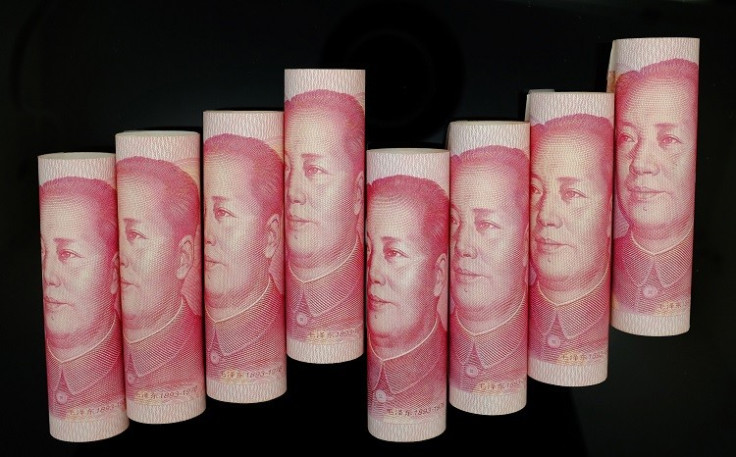China's RMB Liberalisation: the Growing Influence of the Currency on Asean Markets

For China's yuan, or renminbi (RMB), its road to internationalisation will take it through the Association of Southeast Asian Nations (Asean).
As a single entity, the 10-member Asean group ranks third in the world in population, fourth in trade and ninth in GDP.
Its economy is forecast to grow by 5.5% annually over the next five years.
What's more, it sits in China's backyard.
Growing Influence
The yuan is not yet a global currency but its influence is growing.
A study by Arvind Subramanian and Martin Kessler of the Peterson Institute of International Economics suggests a renminbi bloc is emerging in Asia.
According to their findings, seven out of 10 East Asian currencies track the yuan more closely than they do the dollar - of those seven, five belong to Asean (Indonesia, Malaysia, the Philippines, Singapore and Thailand), while four (Brunei, Cambodia, Laos and Myanmar) were not included in the study.
Continued economic growth in Southeast Asia, coupled with the establishment of an offshore RMB centre in Singapore, will further fuel the rise of the yuan.
From the perspective of an investment currency, Southeast Asia is becoming an ever more attractive destination for the yuan.
The increasing integration of the global supply chain is bringing China and Asean closer.
And as Chinese companies invest in Southeast Asia, it makes sense to use renminbi, which can be recycled by Asean's growing middle class to buy Chinese products.
Asean is home to an eclectic mix of industries and sectors, from banking and finance (Singapore) to manufacturing (Thailand and Indonesia) and natural resources (Malaysia and Myanmar).
According to the United Nations Conference of Trade and Development, in 2012 Foreign Direct Investment (FDI) inflows to Asean was more than $111 bn.
Its share of global FDI inflows was 8.2% - comparable to China's 9.0%.
China and Asean Trade
So far, China's investments in Asean have focused on natural resources, agriculture and manufacturing. But there is also growing interest in developing manufacturing capacity to serve the local market.
Similarly, Asean-originated FDI has begun to flow into China. The increase in the offshore renminbi liquidity pool will lead to more and bigger cross-border investments, creating a virtuous circle of expansion.
RMB internationalisation is also driven by its use as a trade currency - and trade is booming between Asean and China.
Bilateral trade reached a record high of $400.9bn in 2012, a year-on-year increase of 10.2%.
And that figure is expected to pass $1tn by 2020.
China is Asean's largest trading partner, while the Association ranks third on China's list.
The Asean-China Centre predicts that Asean will become China's largest trading partner within the next 36 months.
The planned economic integration of Asean is one reason behind the expected rise of Asean-China trade.
Mouth-Watering Prospects
In 2015, the Asean Economic Community will come into existence, creating a single market of more than 600 million inhabitants - or about one-eleventh of the world's population.
This is a mouth-watering prospect for any business, Chinese-owned or otherwise.
At the same time, the transformation of the Chinese economy will also boost Sino-Asean trade.
As China develops, wage costs will rise and the economy will come to rely less on manufacturing and more on services. It will move out of its current investment-led growth model and into one driven by domestic consumption. This means a new "factory of the world" will emerge - and Asean is an ideal candidate.
Asean Labour Market
Asean labour is already becoming more attractive.
The Samsung Economic Research Institute reports that the China-to-Indonesia wage ratio increased from 2:1 in 2005 to 3:1 in 2012, while the Economist Intelligence Unit projects that it will rise to 4.5:1 by 2015.
Geographically, manufacturers have adopted a "China+1 strategy", transferring some of their production bases from China to Asean.
Low-margin, labour-intensive industries like clothing and textiles lead the way, but more recently higher value-added industries like electronics and automobiles are also heading southeast.
As the Chinese middle class expands, so will its appetite for consumer goods. With the integration of the 10 Asean economies, a similar situation will arise in Southeast Asia.
Trade between these two huge markets will grow, and invoicing it in renminbi will bring benefits to businesses on both sides of the border.
Offshore RMB Centre
The establishment of an offshore renminbi centre in Singapore will facilitate the settling of Asean-China trade in the Chinese currency.
This will deepen the liquidity pool of the renminbi in the region, furthering developing the general offshore market.
With the addition of another offshore centre, RMB internationalisation has picked up more steam.
Advanced economies are more attached to established currencies such as the dollar and the euro, so it will be emerging markets that will become the first adopters of the yuan.
Asean, with its economic potential and geographic proximity to China, will play a huge role in RMB becoming a global currency.
Noel Quinn is HSBC's Regional Head of Commercial Banking, Asia-Pacific.
© Copyright IBTimes 2025. All rights reserved.





















